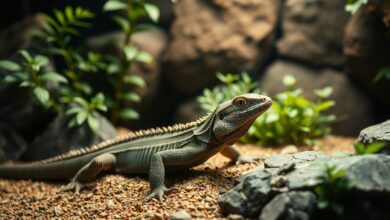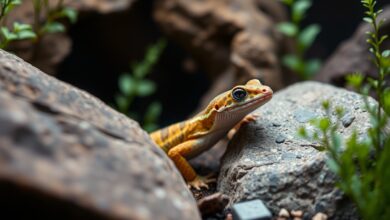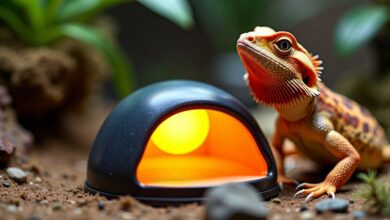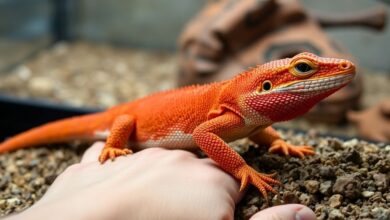How Long Can a Bearded Dragon Go Without Heat? 5 Essential Insights
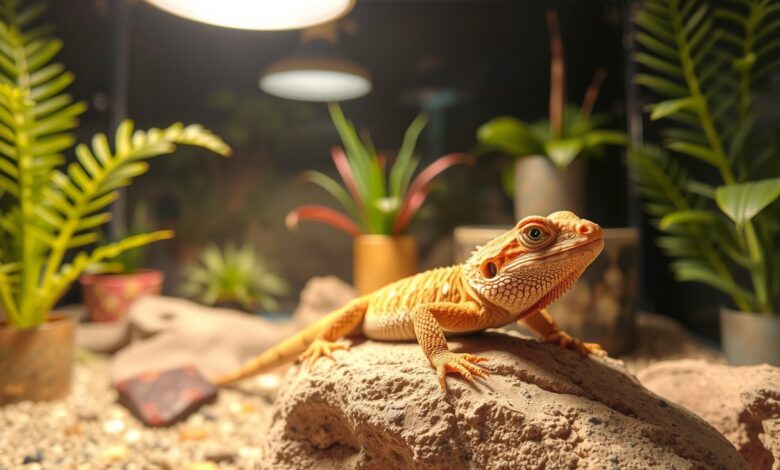
Dragons need the right conditions to thrive, and temperature is vital for your bearded dragon’s health. Without adequate heat, these reptiles can suffer from serious health issues, including metabolic bone disease and stress. You might wonder how long your bearded dragon can safely endure cooler temperatures. In this post, we’ll explore five vital insights about temperature, including signs of distress, safe timeframes, and what you can do to ensure your pet remains healthy and happy in challenging situations.
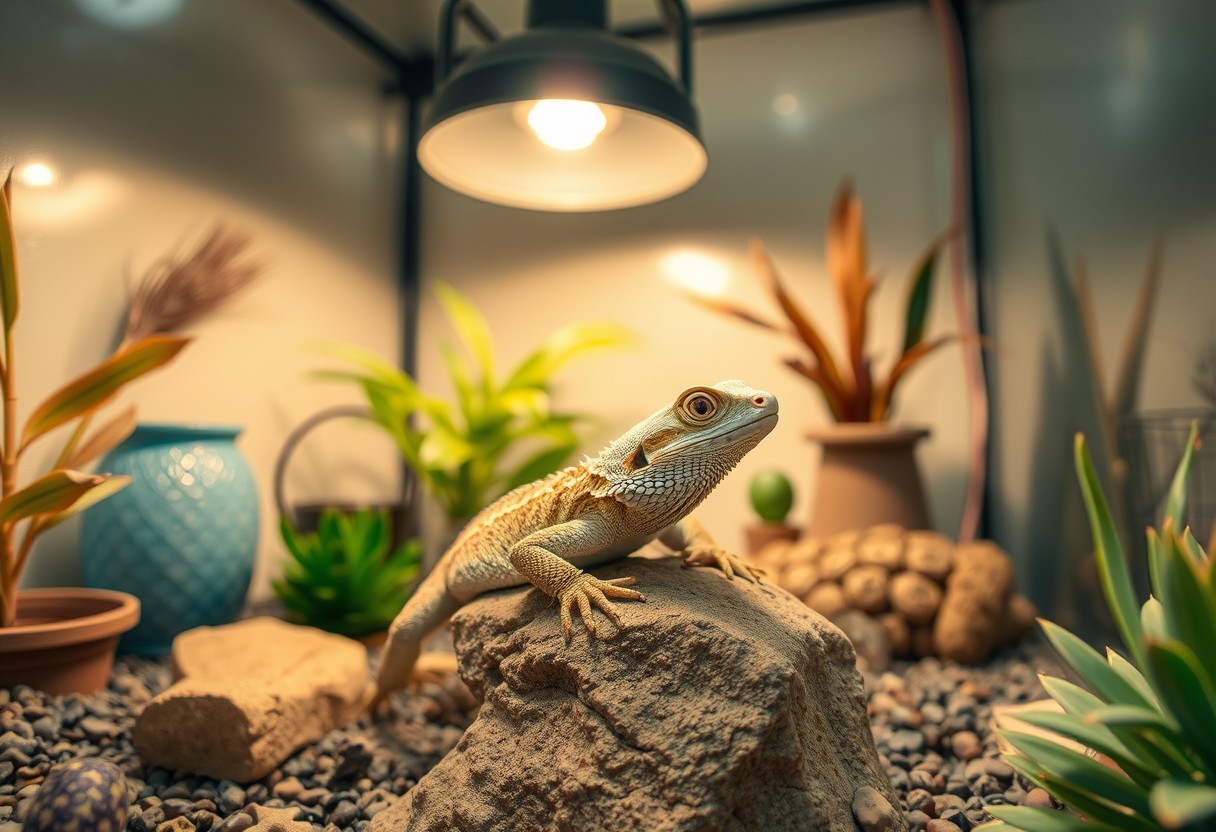
Key Takeaways:
- Heat Source Duration: Bearded dragons can tolerate a drop in temperature for about 24 hours before it begins to impact their health.
- Temperature Impact: Prolonged exposure to cooler temperatures can lead to metabolic issues and decreased immune function.
- Emergency Measures: In case of heat loss, it’s crucial to implement quick solutions such as heat lamps or heated pads to restore warmth.
Understanding Bearded Dragon Habitat Requirements
For proper care of your bearded dragon, it is imperative to understand its specific habitat requirements. This includes not just temperature, but also humidity, lighting, and space to move. Your bearded dragon’s environment should mimic its natural habitat to ensure its health and well-being, allowing it to thrive in captivity.
Importance of Heat for Bearded Dragons
Bearded dragons depend on heat to regulate their body temperature and metabolism. Without adequate heat sources, they cannot properly digest food or absorb imperative nutrients, which can lead to serious health issues. Providing a warm and comfortable environment is vital for their overall vitality and longevity.
Ideal Temperature Ranges
An appropriate temperature gradient is key for your bearded dragon’s enclosure. Here’s a breakdown of the ideal temperature range for different areas of their habitat:
| Habitat Area | Ideal Temperature (°F) |
|---|---|
| Hot Spot | 95-105 |
| Cool Side | 75-85 |
| Nighttime Temperature | 60-70 |
With proper monitoring, maintaining these temperature ranges will create a conducive environment for your bearded dragon. The hot spot is imperative for basking and digestion, while the cool side allows for thermoregulation. Nighttime temperatures should not drop too low to prevent stress and potential health risks, so always ensure your setup meets their temperature needs.
Effects of Heat Loss on Bearded Dragons
Clearly, the reduction in temperature can severely impact your bearded dragon’s health and behavior. Without adequate heat, your pet can experience thermal stress, which compromises its immune system and leads to a host of potential problems. For more insights on the subject, check out How Long Can A Bearded Dragon Go Without Heat: Care Tips!
Physiological Impacts
Across various systems, the lack of heat can lead to serious physiological impacts, such as slowed metabolism and impaired digestion. Your bearded dragon relies on heat to process food effectively, and without it, you may notice a decline in appetite and weight. Prolonged exposure to cold can lead to life-threatening conditions, as it inhibits the proper functioning of vital organs.
Behavioral Changes
Above all, your bearded dragon’s behavior can shift dramatically when faced with inadequate heat. You may observe signs of lethargy, decreased activity, and even hiding behaviors as they seek warmth. These behavioral changes are your pet’s instinctual responses to conserve energy and maintain its body temperature.
Further, you should be vigilant for signs of distress, such as excessive basking or unusual aggression, as these can signal that your bearded dragon is struggling to cope with the temperature drop. Affects such as decreased appetite, depression, and increased hiding behavior indicate severe discomfort. On the other hand, maintaining a consistent heat source ensures your bearded dragon remains healthy, active, and happy, emphasizing the need for proper habitat conditions.
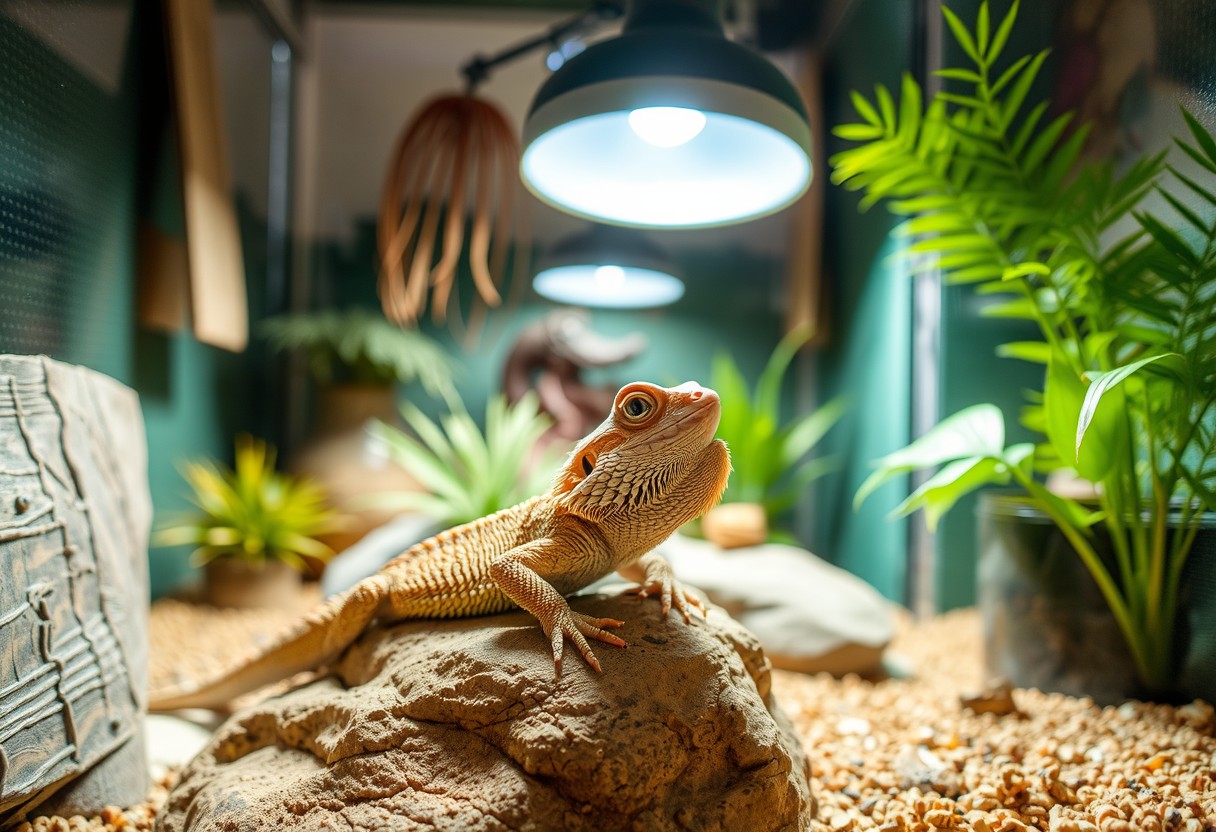
Duration a Bearded Dragon Can Survive Without Heat
Once again, it’s important to understand that bearded dragons are cold-blooded reptiles that rely on external heat sources to regulate their body temperature. Without appropriate heat, your bearded dragon can start to show signs of distress. Typically, they can survive without heat for about 24 hours but begin to experience significant health risks if the temperature drops below their preferred range for longer periods. Maintaining an optimal environment is crucial for their well-being.
Short-Term vs. Long-Term Exposure
Against a backdrop of extreme temperatures, your bearded dragon can endure a short spell without heat, usually around 12 hours, without severe consequences. However, during prolonged exposure, exceeding 24 hours, they may face life-threatening conditions. It’s vital to provide immediate heat if you find your pet in such a situation, as recovery time is crucial for their health.
Factors Influencing Survival Time
One of the main influencers of how long your bearded dragon can survive without heat includes multiple critical factors:
- Age
- Health status
- Size
- Environmental conditions
The significant variation in these factors means that some dragons may cope better than others under similar circumstances.
Bearded dragons possess unique physiological traits that impact their survival time when deprived of heat. For instance, juvenile dragons are generally less resilient than adults due to their smaller body size and higher metabolic rates. Additionally, a pre-existing health condition can severely limit their ability to endure temperature drops. Factors such as the size of the enclosure and ambient airflow also play roles in heat retention. The awareness of these elements helps you better prepare for emergencies.
- Metabolic rate
- Enclosure size
- Age
- Health conditions
The combination of these aspects reveals the importance of maintaining a controlled environment for your pet.
Rescue and Recovery Strategies
Keep in mind that a sudden drop in temperature can be life-threatening for your bearded dragon. If you notice signs of Hypothermia in Reptiles, prompt action is necessary to ensure their recovery. Begin by providing warmth and monitor their condition closely for any signs of distress or complications.
Immediate Actions to Take
Along with restoring heat, you should hydrate your bearded dragon slowly to avoid shock. Offer a shallow dish of lukewarm water for them to soak in, ensuring they are in a safe and comfortable environment, and always keep a close eye on their behavior.
Long-Term Care Tips
Below are some solid tips to ensure your bearded dragon remains healthy after a heat-related incident:
- Maintain a consistent basking area temperature between 95-110°F.
- Use a quality thermometer to monitor temperature regularly.
- Provide hiding spots and proper lighting to mimic natural conditions.
- Ensure a balanced diet with adequate hydration.
Perceiving the importance of these elements can significantly enhance your bearded dragon’s well-being.
Understanding the long-term care tips will fortify your pet’s health and resilience. A stable environment is crucial, involving:
- Regularly cleaning and maintaining the habitat.
- Implementing gradual changes in temperature to avoid stressing your dragon.
- Consulting a veterinarian for any unusual behavior or signs of distress.
- Keeping your bearded dragon socialized and engaged.
Perceiving these factors will help create a nurturing life for your bearded dragon, ultimately reducing the risk of health issues and enhancing their quality of life.
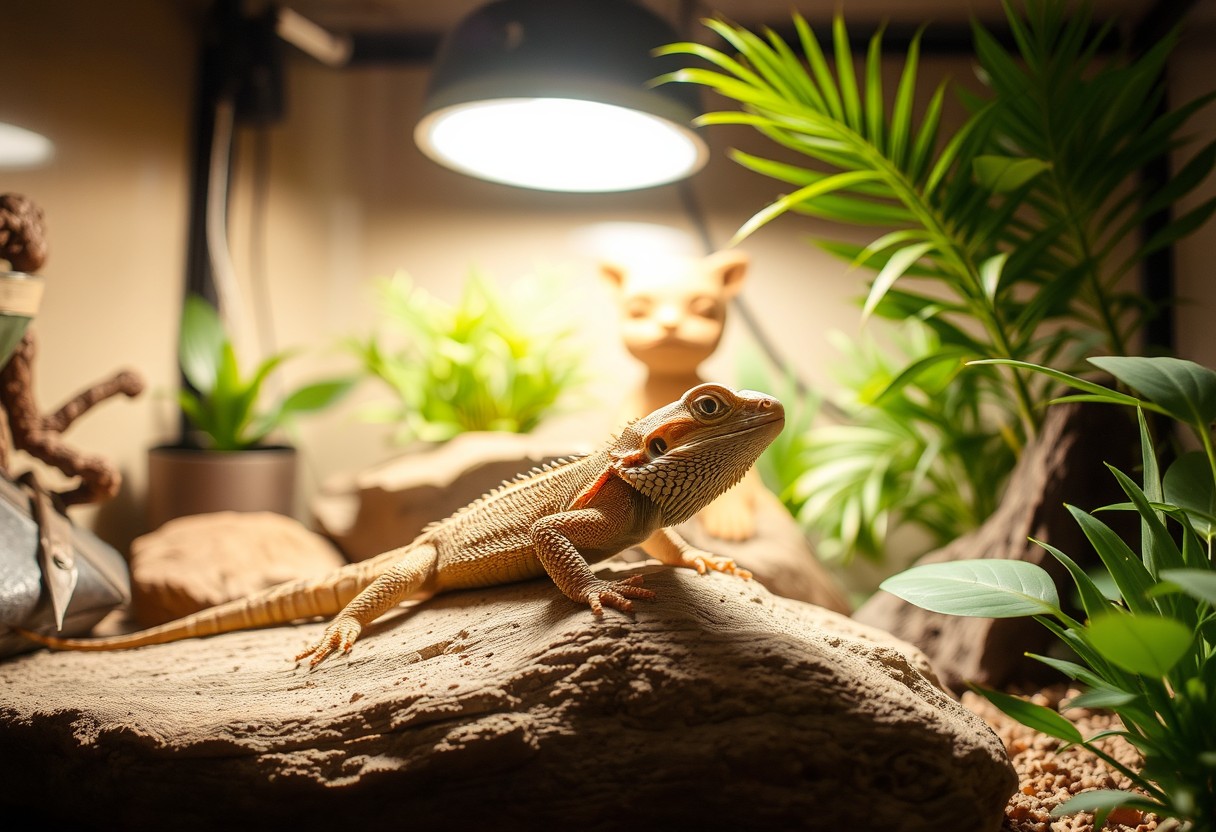
Preventive Measures for Heat Loss
Your first line of defense against heat loss is ensuring that your bearded dragon’s habitat is set up correctly. Regularly check for drafts, seal any gaps, and use thermal insulation materials when needed. You can find more detailed information in the Bearded Dragon Care Sheet. Additionally, ensure that the heat source is functioning properly to maintain a consistent temperature.
Maintaining Optimal Environment
Heat retention is vital for your bearded dragon’s health. Ensure that your enclosure is appropriately sized and includes heat lamps or ceramic heaters. Utilize hides and substrate that help trap heat, and verify that there are no cold spots in the habitat, as these can lead to stress and health problems.
Using Temperature Monitoring Tools
At various points throughout the day, monitor the habitat’s temperature using thermometers or digital temperature gauges to ensure an optimal environment for your bearded dragon.
Temperature Monitoring Tools
| Tool | Description |
|---|---|
| Thermometers | Inexpensive and crucial for regular checks on habitat temperature. |
| Digital Gauges | Provide real-time readings and often have high/low memory features. |
Due to the sensitive nature of bearded dragons, having reliable temperature monitoring tools is imperative for their well-being. These gadgets help prevent potentially dangerous scenarios where the enclosure gets too cold or hot, leading to health issues such as hypothermia or hyperthermia. Regularly tracking temperatures ensures you maintain an inviting thermal gradient, enhancing your dragon’s comfort and overall health.
Further Importance of Monitoring
| Reason | Details |
|---|---|
| Health | Staying within the optimal temperature range fosters good growth and digestion. |
| Behavior | Temperature fluctuations can lead to stress, aggression, or lethargy. |
Conclusion
Now that you’ve explored how long a bearded dragon can go without heat, it’s crucial to prioritize your pet’s well-being. Your bearded dragon can endure short periods without proper temperatures but prolonged exposure can lead to severe health issues. Ensuring a stable environment with adequate heat and light is vital for your pet’s survival and overall happiness. If you encounter any sudden temperature drops, take immediate steps to restore the appropriate conditions to support your bearded dragon’s health.
FAQ
Q: How long can a bearded dragon survive without heat?
A: Bearded dragons can typically survive without heat for about 24 to 48 hours, depending on the ambient temperature and their overall health. Prolonged exposure to cooler temperatures can lead to health issues, as these reptiles require warmth to regulate their body temperature and facilitate digestion.
Q: What are the signs that my bearded dragon is too cold?
A: If your bearded dragon is too cold, you may notice signs such as lethargy, lack of appetite, and unusual hiding behavior. Additionally, they might show signs of slowing down or become less responsive. If you observe these symptoms, it’s important to provide warmth quickly to prevent further health complications.
Q: What should I do if my bearded dragon goes without heat for too long?
A: If your bearded dragon has been without heat for an extended period, first check its current temperature and gradually warm the environment back up. Use a heat lamp or under-tank heating pad to create a suitable habitat. Monitor your dragon closely for any signs of distress or illness and consult a veterinarian if you notice any concerning symptoms, such as persistent lethargy or refusal to eat.


